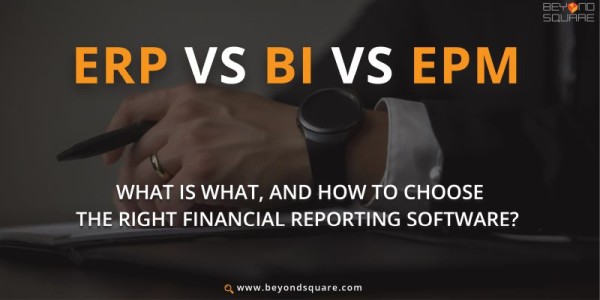With the rapid digitization of our world, the role of CFO has drastically evolved over the last few years. Most CFOs today have significant impact on boardroom decisions, which in turn demands that finance teams make faster, smarter and fact based decisions.
Most organizations report that they have dedicated teams that spend all their time preparing management and statutory financial reports. In more than 85% of the organisations, financial reporting activity is largely manual and spread-sheet driven.
It is no surprise then, that financial report preparation is the top frustration for today's CFO.
It is clear to the CFO that they need to automate the reporting process. What is not clear to them though, is how?
- Should they upgrade their ERP?
- Should they invest in a BI tool?
- Should they invest in EPM?
ERP or Enterprise Resource Planning tools are transaction management systems that are designed to solve the various transaction processes in an organisation, be it procurement, manufacturing, purchase, book keeping etc. While it also provides some reporting features around transactional data, it is not designed to solve the 'reporting' problem.

BI tools are effective in pivoting information from multiple sources, and help you visualize and analyze business performance. This is especially useful with large volumes of operational and other business data.
Financial reporting, unlike operational data analytics comes with its own set of challenges. The process involves getting the data ready before it can be visualized. The most common activities performed by financial analysts as part of report preparation include: defining a standardized grouping structure for reports, regrouping of chart of accounts to the suit the reporting structure, repeating this activity across companies in case of multi-entity organizations, handling currency conversions, reclassification of accounts, consolidated adjustments & eliminations, allocation of indirect costs, dimensional grouping of business segments amongst many other things.
If there are multiple stake-holders who need different types of reports, the whole process has to be repeated for each such reporting requirement. For e.g. management/investor reporting varies significantly from statutory financial reporting. Some of our clients prepare monthly management reports, quarterly investor reports, risk reports, dashboards, and quarterly statutory reports as per IFRS, IND AS, USGAAP & other local statutory reporting formats.
These are concerns that are neither addressed by ERP tools, nor by BI tools. Reason: they are not designed to address them.
EPM (Enterprise performance management) tools are designed to solve the financial consolidation and reporting problem. EPM's help improve the business processes that are necessary for managing and improving an enterprise's performance. It helps business users with the processes that are required for them to seamlessly close their books, consolidate the numbers, report the numbers as required by various stake-holders, and analyze the information against budgets, past periods etc. It is evident that EPM provides the over-arching framework and financial processes that finally lead to reporting. The visualization/BI component is only a part of the overall solution.

Online GST Training & Certification Course
Many CFO's have treaded the path of upgrading their ERP or investing in BI solutions to automate financial reporting, and most such initiatives have failed. Finding the right EPM tool and putting together a good change management process internally will yield great results. CFOs have reported much faster close cycles, smoother consolidations, higher productivity and better quality reporting and analytics after implementing the right EPM solutions.
Choose once, but choose wisely.
The author can also be reached at kganeshan@gmail.com







 CAclubindia
CAclubindia
